Oxford
All sports and pastimes come with their own set of unwritten rules. In golf, talking in backswings and stepping on lines is perhaps the best way to lose future invitations. In baseball, no player would dream of bunting during a no-hitter.
In the fishing world, etiquette is present as well. In fly fishing, the term is used rather harshly, disparaging wet fly anglers and shaming those who fish downstream. In conventional angling, both competitive and non-competitive sectors of the industry have their unique set of rules.
“Walleye and Perch fishing are prime examples in where unwritten rules can be broken,” says Ang. “We still see it all the time when a couple of boats start netting Walleye and then a flotilla converges upon their hotspot for all to cash in. Although this is perfectly legal, make sure you give the original boat(s) their space. After all, they found those active fish.”
“Tournaments are even worse,” continued Ang. “Competitors will blatantly pull in front of others that are working down a row of docks, trees or a weedline. We’ve even heard of boats coming within a foot or less (sometimes bumping boats believe it or not) of other competitors just because they found the fish as well… NOT COOL!”
Despite its surge in popularity, however, the unwritten rules of the ice fishing world seem to be a bit blurrier and, well… unwritten.
Today, we’re going to try to change that.
Drawing from multiple lifetimes of experience on the hardwater and hours of wading through Facebook groups and ice fishing forums, here is our ever-growing guide to ice fishing etiquette!
Section 1: Keep your Distance!
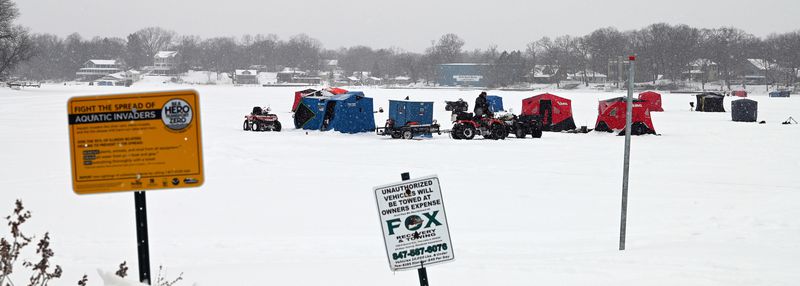
1.1 – Hut Placement
How many times have you set up on a wide-open stretch of ice, only to find yourself an hour later surrounded by dozens of scavenging huts? The answer is likely: “far too many”.
This common occurrence is number one on this guide for a reason, as it is by far the most common complaint amongst long-time ice anglers. Essentially, this is the “talking in the backswing” of the ice fishing world and is the absolute best way to turn a fun day on the water into an awkward one.
To avoid any unnecessary tensions, try to give other huts as much room as possible. The amount of space, of course, varies from lake to lake but try to maximize the space you give without sacrificing the enjoyment of your day. If the spot you are fishing is well-known or exceptionally busy, try having a conversation with the people you are setting up beside to ensure they are comfortable with you setting up nearby. Many anglers are very accommodating and a simple introduction can go a long way to avoid tensions out on the ice.
1.2 – Driving Near Huts
Just as it is important to keep your distance from other huts when you are setting up, it is also important to give anglers space when you are driving a sled or ATV.
The main reason for this is safety, as an unmarked hole or an angler quickly emerging from a hut could easily lead to an accident. From a courtesy perspective, it is also nice to give huts their space to spare them the noise and to ensure you are not running over or covering with snow any of the gear they may have outside their hut.
1.3 – Stay Clear of Trails
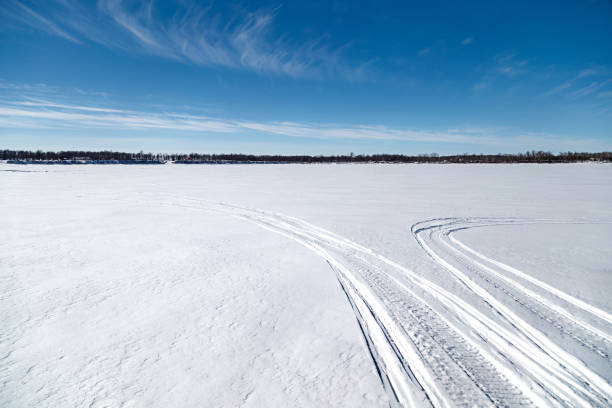
While the main responsibility may lie with the driver of the sled, anglers can also play a role in ensuring accidents are avoided.
Popular travel routes are often easily identifiable out on the ice as sleds, ATVs, and trucks often take just one or two routes to get to their desired section of ice. Although these packed-down areas may be convenient for travel, do your best to avoid setting up on, or right beside, one of these trails to avoid getting in the way of a vehicle heading to or from their spot.
1.4 – When Nature Calls
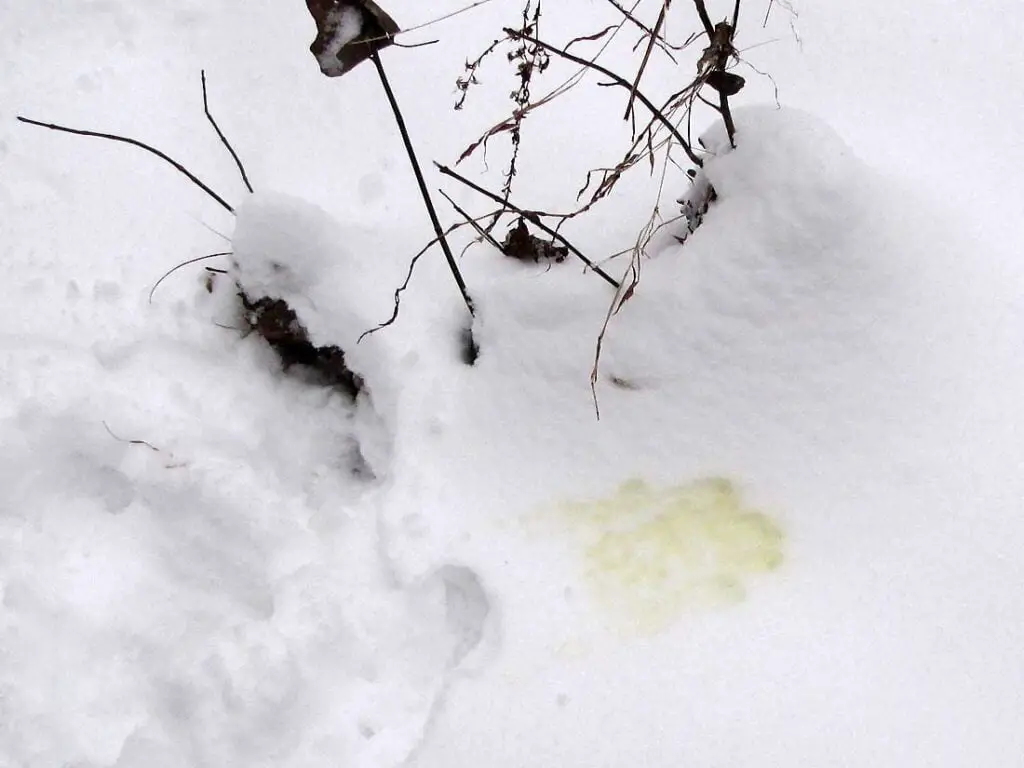
Bathroom breaks are something rarely discussed when planning fishing trips but since these acts of nature are inevitable, Pete Bowman is here to walk you through some etiquette:
“Here’s one that’s not often talked about in ice fishing articles but it’s a reality,” says Pete Bowman “and I know why… because it’s awkward.”
“Taking a leak or worse yet, stage 2 in the relief department. If possible, walk or take the ATV or snowmachine to a nice private area on land. No one’s going to scorn you for this. If it’s just a pee, then hide behind your hut if land is far away. There’s not much worse than a wannabe ice fisherman, with a head full of beers, blatantly helicoptering his gear around, while drawing circles and writing their name in a new blanket of snow. Common sense please!”
Section 2: Leave *Some* Trace
2.1 – Mark your troughs
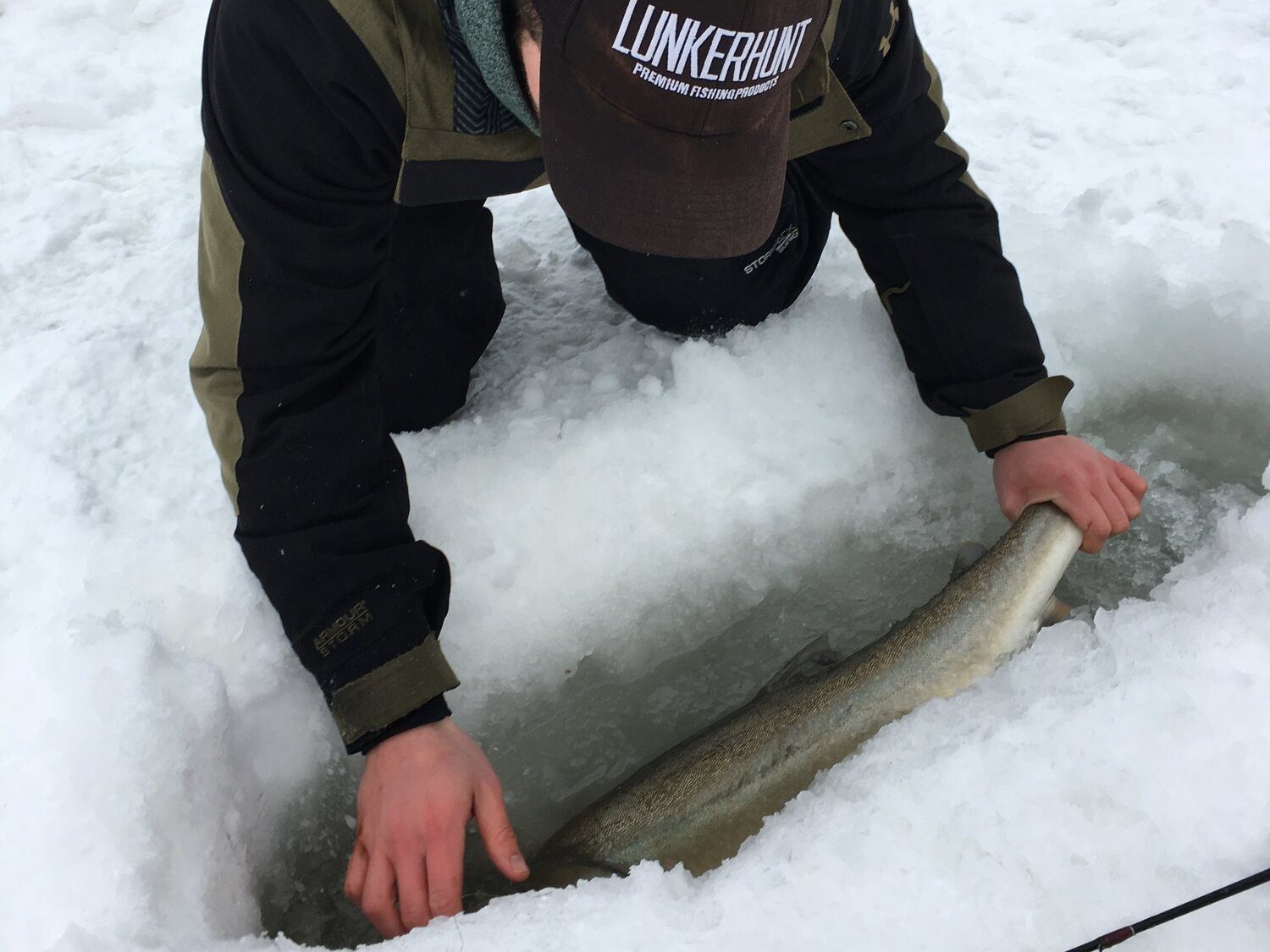
Every year here at Fish’n Canada, we remind ice anglers that, according to Canadian law, anglers can be charged with manslaughter if someone was to fall through a hole that they drilled through the ice. While this inevitably leads to discussions around banning holes larger than 10 inches – I am not in favour of this solution.
Personally, I have drilled countless holes larger than 10 inches in my life and have found great reasons for doing so. When fishing on remote lakes in British Columbia, we would often drill troughs large enough to revive 30+ inch Bull Trout while they awaited release. On some of the smaller backcountry lakes, I have also cut squares large enough to sight fish early-season Brook Trout – an experience tough to get while looking through an 8-inch hole.
Thankfully, anglers like myself can both protect our fellow anglers and enjoy a bit of sight fishing by following one simple step – mark your holes.
According to the same law referenced above, manslaughter charges are only applicable to accidents resulting from unmanned or unmarked holes. This means that by simply marking the area you were fishing, all fears of breaking this law can be negated.
For me personally, I always try to bring a tree branch or stick with me onto the ice if I am planning on drilling a hole larger than 10 inches. Furthermore, contrary to popular opinion, I also leave the area open and snow-free in order to ensure the area is as visible as possible. While some may suggest that covering holes with snow helps it freeze faster, I have personally stepped through plenty of snow-covered holes that I could have easily avoided if they were left clear.
2.2 – Clean up your garbage

This one should really go without saying but, evidently, it does not.
After you have come up with a plan for marking the hole you are going to drill, “Leave No Trace” should be the mindset. This means that beer cans, food wrappers, worm containers, and, yes, cigarette butts all need to be packed out. Although it should be obvious that anything you leave on the ice is inevitably going to end up in the water, the number of people who leave things on the ice to later be washed away in the spring seems to be substantial compared to open water.
I mean, imagine seeing someone throwing an empty propane tank overboard in the summer? Surely we would have a riot on our hands. Yet, year after year, scenes like the one depicted below make headlines somewhere across the country and cast a shadow over the entire sport.

A solution to this problem is to simply pack out everything you bring in and always make sure you have a plastic bag in your sled to pack out all your garbage and try to leave the area as clean, or cleaner, as when you got there.
2.3 – Cover the blood
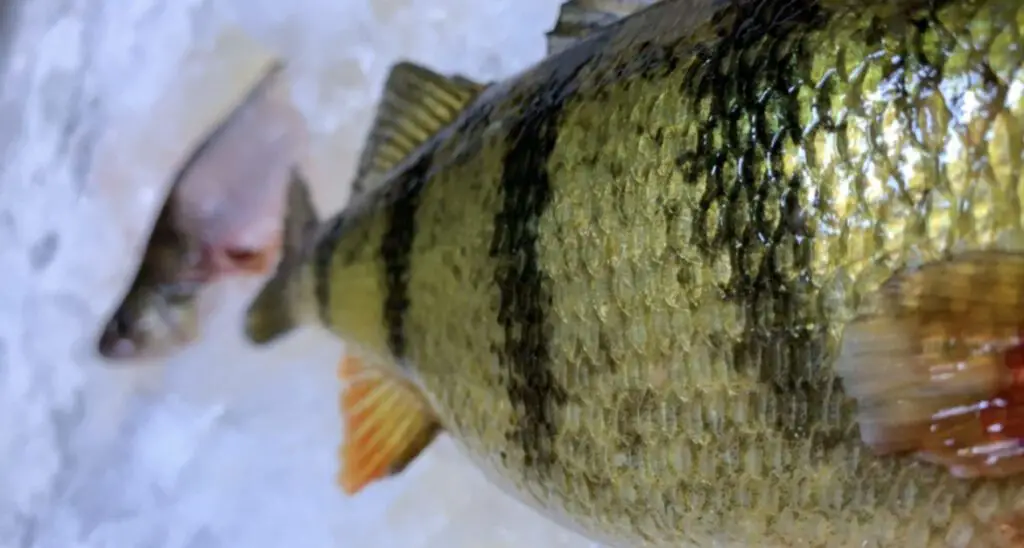
This is more of a suggestion than a rule, but there are a few good reasons for doing it.
For starters, leaving blood showing on the ice is a sure sign to other anglers that there were fish being caught and your favourite fishing hole is very likely to be surrounded by scavenging anglers the next time you show up to fish it.
Even if you’re not worried about giving away your spots, however, leaving your blood and guts on the ice is still something you should avoid doing out of consideration for other people who use the lake. We ice fishermen may make up the majority of people using frozen lakes, but dog walkers, skaters, and hikers also tend to frequent these areas and may not be as used to seeing fish carcasses and gut piles. Although this may seem silly and lead to the inevitable “snowflake” remark in the comments below, it is important to remember that, as outdoorsmen, we are increasingly outnumbered and many of the changes to our laws and regulations come from outside, not inside, the fishing and hunting community.
For this reason, it is always best just to pack the fish carcasses back out when you are done for the day. For those making the logical decision to dump the remains back into the water, be sure to check with your local regulations, as according to a recent Ontario newsletter, this may actually be illegal.
Section 3: You Don’t Own the Water
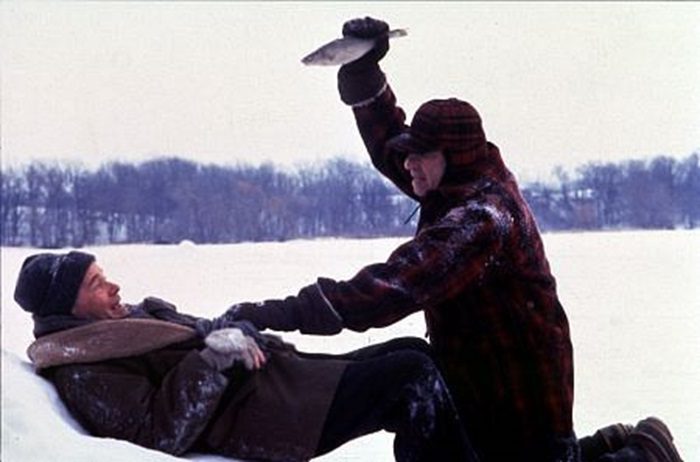
3.1 – First-Come, First-Serve
This is one that is as relevant to ice fishing as it is to open water, yet seems to be broken much more frequently during the hardwater season.
This was most evident a few years ago when fishing on southern Ontario’s Bay of Quinte when a friend of mine was approached by a man claiming he was “in his spot” and demanded him to leave. Of course, my friend did not surrender the spot he had been fishing the entire morning, resulting in an awkward day of close-quarters fishing and relentless arguing.
This story may sound like an extreme example, but I have heard examples like it enough times to warrant this reminder. As they are during all times of the year, fishing spots are first-come, first-serve (similar to duck hunting public areas after opening day). This includes the spot you have been fishing since you were six, the spot you had fished the previous weekend, and even the spot you fished the previous morning. Once you leave a spot, it is free for the taking.
Of course, many anglers will be perfectly happy to let you fish alongside them after an introduction, but always keep things polite and avoid creating conflict out on the ice. If you want a spot all to yourself, unfortunately, the only solution is to get up earlier or to find some new water.
3.2 – The Keyboard Warrior

This last one is the only rule on this list that applies to those sitting at home.
For whatever reason, the ice fishing community, especially the Facebook ice fishing community, is becoming increasingly uninviting to new anglers. This seemed to be heightened during the pandemic but hostility towards anglers asking questions or seeking advice seems to be at an all-time high.
While it is reasonable to be annoyed by people asking for spots, try to be a bit more accommodating to those asking for ice thickness or looking for advice. Many anglers simply can’t afford to drive two or more hours just to check ice conditions, so if you live in the area, by all means, give them a hand. If you don’t want this information public, try reaching out to them individually.
Although some of these people are inevitably going to press you for spots, you would be surprised how many people are simply looking to take their kids out fishing and would just like to know if it is safe to head out or not.
Did we miss something? Have a pet peeve you’d like to see in the next edition? Let us know in the comments below!
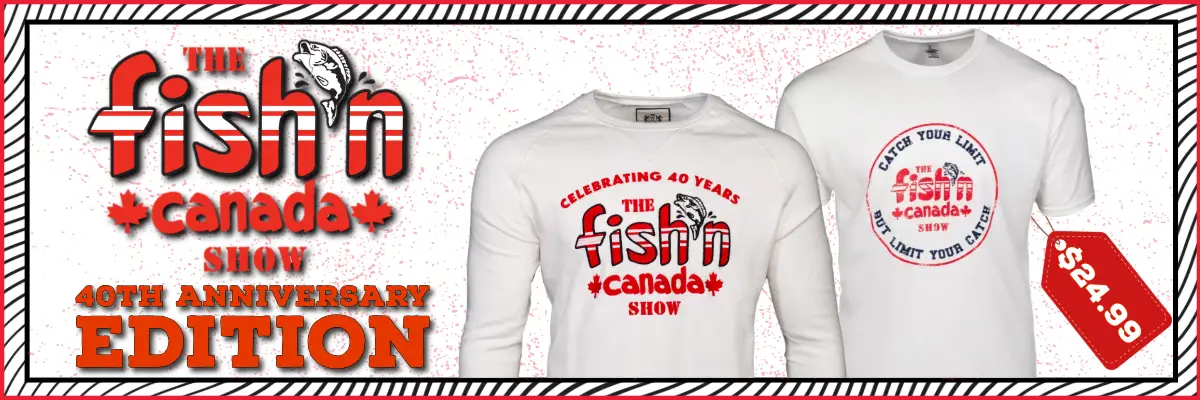



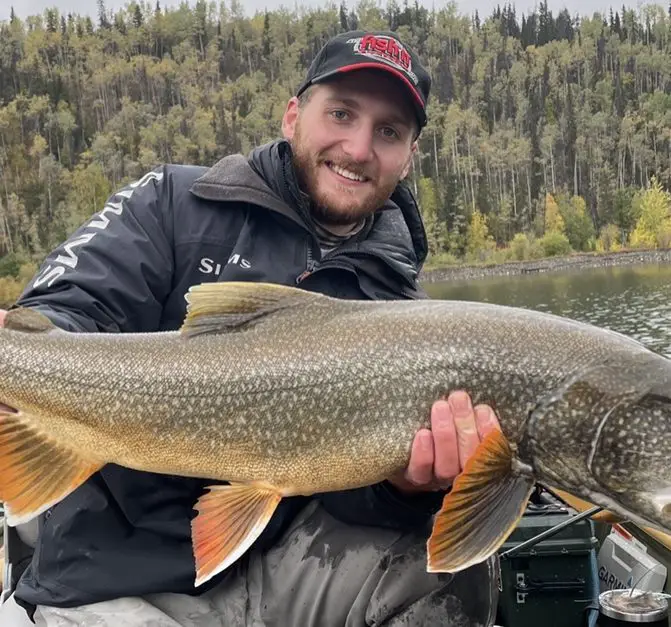
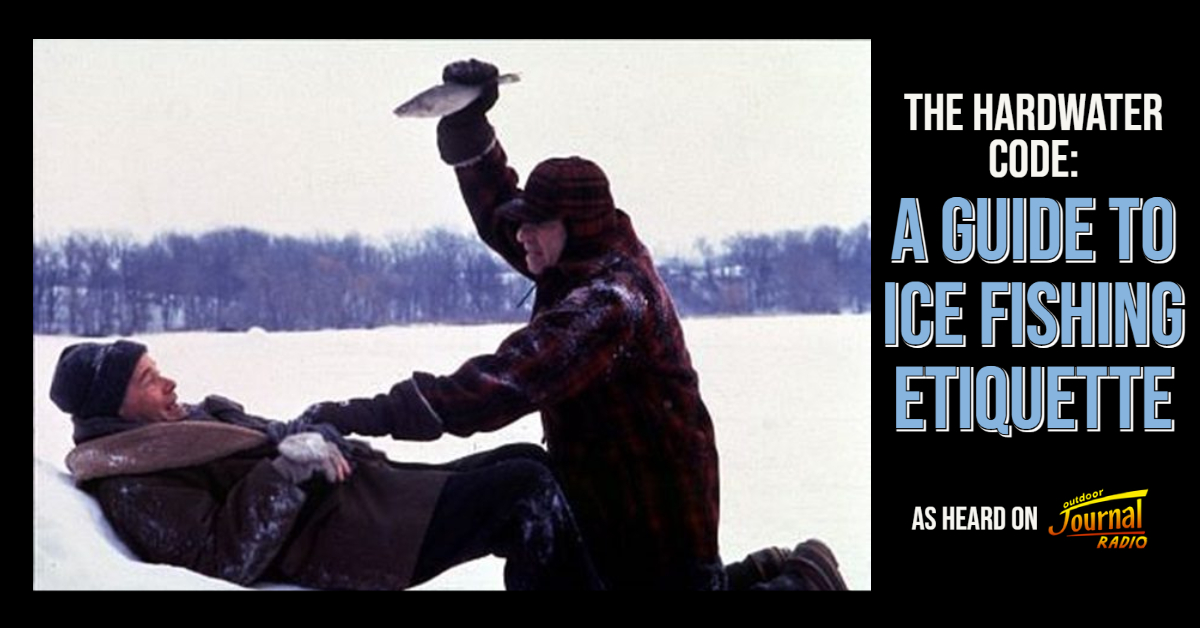

3 Responses
Common sense seams to be disappearing nowadays
Great suggestions – common sense and common courtesy, etiquette, go a long way. Thank you.
Etiquette certainly goes a long way to easing tensions out on the hard water. As Dean states, unwritten rules and common sense will ensure a pleasant outing. Yes Pete, “There’s not much worse than a wannabe ice fisherman, with a head full of beers, blatantly helicoptering his gear around, while drawing circles and writing their name in a new blanket of snow.”
Geesh! Now how can I get that picture out of my head. LOL !